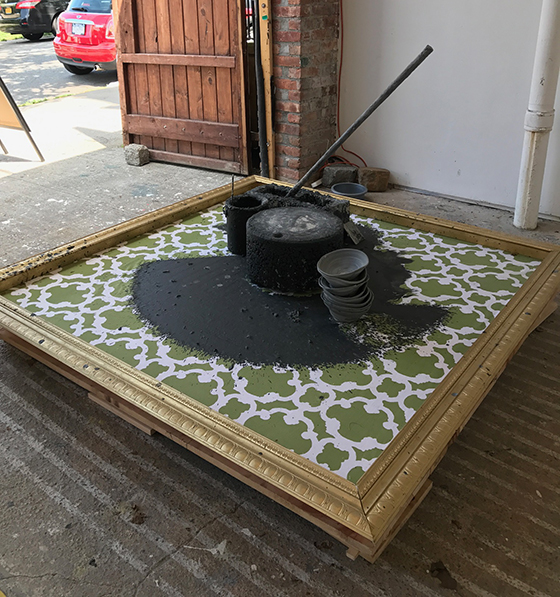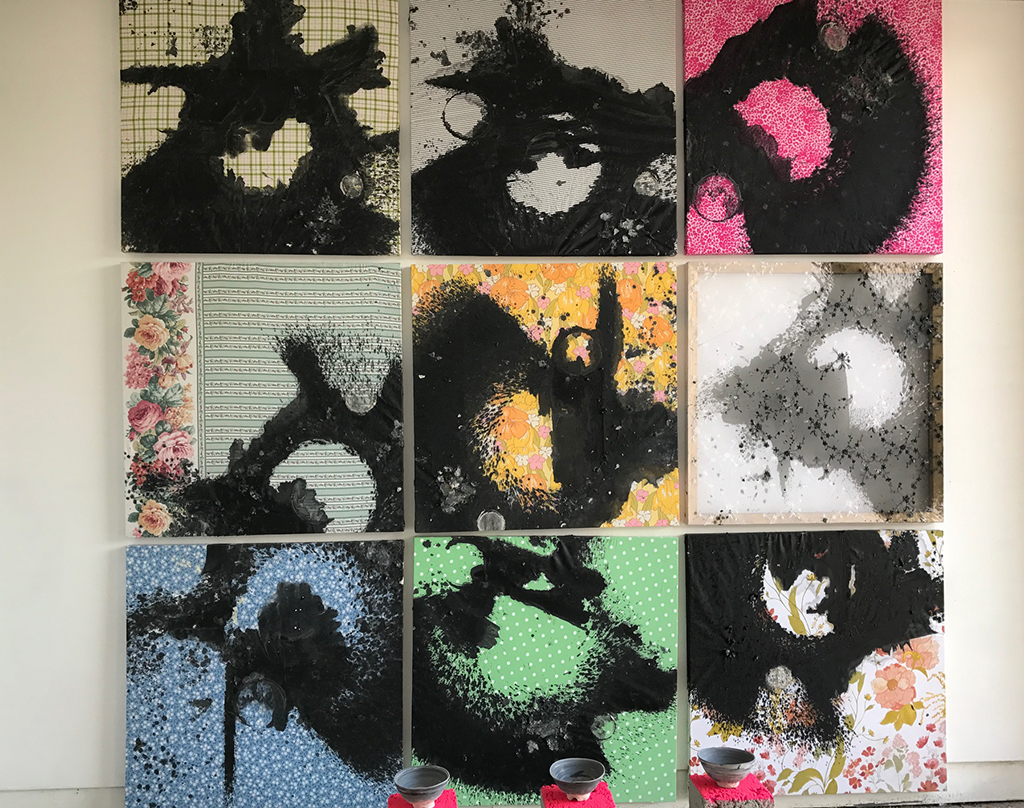 Here’s how the artist Andrew Snyder made one of his works at Open Source gallery during his Summer 2017 exhibition. Using an ancient stone hand wheel he covers clay in ink throws simply shaped bowls. The bowls are then thrown out. What? Yup, he throws out what has become the byproduct of his process. This is because underneath the wheel he lays down in an ornate frame curated swaths of fabric that capture the ink spun off of the spinning bowls. These imprints are the marks of process. Deeply personal footprints of the active making of art. He then takes the fabric he “painted” and frames and hangs them in a grid. The finished work is a family in conversation.
Here’s how the artist Andrew Snyder made one of his works at Open Source gallery during his Summer 2017 exhibition. Using an ancient stone hand wheel he covers clay in ink throws simply shaped bowls. The bowls are then thrown out. What? Yup, he throws out what has become the byproduct of his process. This is because underneath the wheel he lays down in an ornate frame curated swaths of fabric that capture the ink spun off of the spinning bowls. These imprints are the marks of process. Deeply personal footprints of the active making of art. He then takes the fabric he “painted” and frames and hangs them in a grid. The finished work is a family in conversation.
Snyder’s work is about connections. More specifically it is connections between families. The materials he works with are chosen to invoke personal root connections he and universally we all have with over parents, siblings and children. The clay bowls we use to eat the thousands of meals we share together. The fabric we use in thousands of ways that say who we are.
Snyders work is also Bauhaus. Like the impidus for the Bauhaus art movement his work considers the anxieties about souless manufactured products. His aim is to marry creativity with function and he does this by playing with our sense of what is normal to us. He asks that we consider how that bowl we are eating our cereal in was made and who were the people that worked on making that bowl. He also plays with production and more specifically of the mass produced versus the handmade. It is smart to use utilitarian objects (a brick, a bowl) to shift how we see every day things in our lives. His handmade concrete blocks are deceptive. They feel homemade but they are just uniformly standard enough that I had to convince myself that they were not mass produced.

